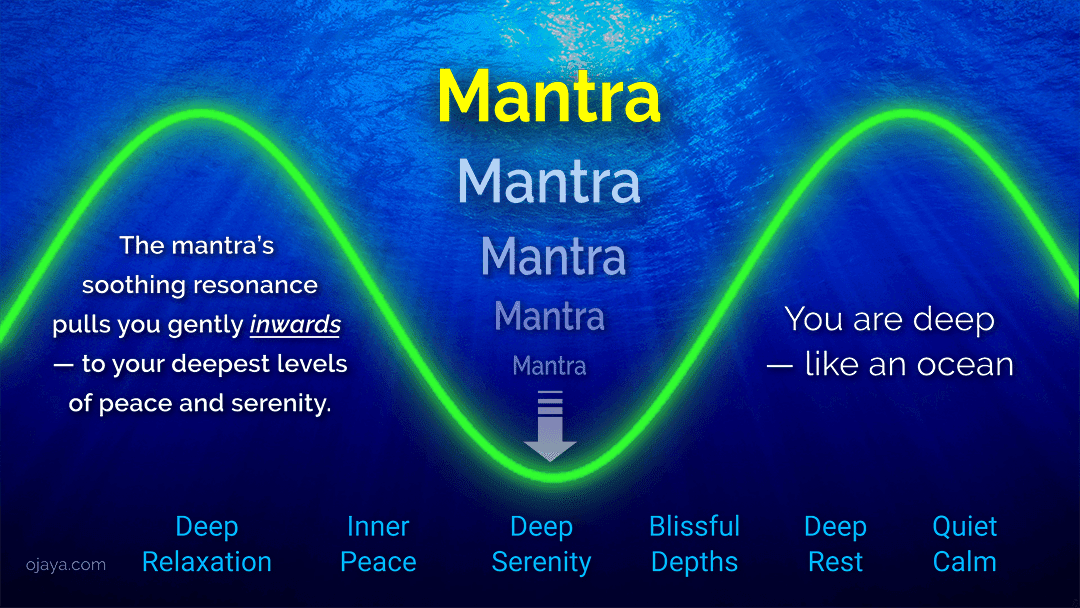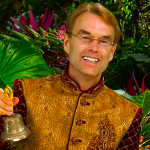Is Your Mantra Organic?
Getty Images/sandsun
20 things you’ll want to know about classic meditation mantras.
What exactly is a meditation mantra? We’re talking now about classic meditation mantras today, and here are 20 things you’ll want to know:
1. The word mantra means: tool of thought.
It’s used for deep meditation.
2. Mantra is a Sanskrit word from India.
Where it comes to us in the first place. But mantras themselves are not Sanskrit, or Buddhist, or English, or any other language for that matter, because …
3. Mantras are raw, organic sounds — from nature.
A mantra is a series of simple, beautiful sounds, whispered by Mother Nature herself. Mantras are the language of nature. If you listen carefully, She is humming all around you with the soothing sounds of mantras.
4. Mantras were discovered ...
In the deep green forests by ancient sages who sat immersed in the tranquility of their meditations. An example of what they heard is the familiar “OM” mantra.
5. Mantras work on the principle of resonance — like music.
When you meditate on the sound of a mantra, your consciousness gets retuned and elevated in just a few minutes.

6. Mantras are not concepts ...
… or meaningful ideas. In music, what is the “meaning” of a Mozart symphony? Whether it’s Mozart or mantras, it’s the resonance that creates the harmony within you.
7. Mantras have flavors!
Like music, every mantra vibrates differently and produces its unique flavors and effects in your mind, your heart, and your nervous system.
8. Mantras penetrate deep.
When properly used, authentic mantras have the power to penetrate deep within your subtle nerves, called nadis. Certain special “top tier” mantras work to cleanse, unblock, and energize the entire electrical network that connects your body, mind, and emotions.
9. Certain kinds of mantras pull you gently within ...
The soothing resonance of these mantras allows you to fully relax and easily calm your mind. They effortlessly draw your awareness inward as you dive deep into your own inner quietude and bliss. This unique ability to gently pull you inward is a key reason that mantras are favored throughout the ages as the No. 1 technique of classic deep meditation.
10. Mantras remove brain fog.
Silent mindfulness of a powerful mantra removes static and brain fog, and creates a calming resonance that penetrates throughout your entire body and being. After meditation, your mind is clear.
11. Mantras are restful.
Mantras coax you inwards to a profound state of deep rest — called samadhi — that is far deeper than your sleep at night. This deeper level of rest rejuvenates you with dynamic energy.
12. Anti-anxiety mantras to the rescue!
If you feel anxious, there is a reason for it. The ancient meditation masters say your inner harmony has become disturbed. Like the grating sounds of an out-of-tune orchestra, you will naturally feel tension and strain whenever your inner harmony is broken.
An anti-anxiety mantra probes the depths of your consciousness with its calm, penetrating resonance to harmonize and retune your system. Anxiety dissolves and evaporates. The sages declare that these mantras are the fastest way to restore harmony and empower you with serene energy.
13. Mantras awaken you.
With daily dips into the peaceful depths of your inner self, something new happens: the deeper levels of your consciousness begin to wake up. You’ll find that new energies emerge within you, with deeper and newer revelations of consciousness.
14. Mantras cannot be learned from books.
Beware if you try to pick up a mantra from a book. If you see the letter A, then how are you supposed to pronounce it? Is it “Aaay” as in “ray”? “Ah” as in “father”? “Aaah” as in “apple”? Or is it “uh” as in “attunement”? The correct sound matters.
15. Don’t be a mantra guinea pig!
It is unwise to make up your own mantra or use some unknown nonsense sound. We have no clue what effect that sound will eventually have on your nervous system. Better to stick with classic, authentic mantras.
16. Mantras for monks and householders.
Most people do not know that mantras are categorized into “monk mantras” and “householder mantras.”
Householder mantras are for people who want deep inner peace along with outer success in life. These mantras support the goals of families, businesspeople, those who enjoy beauty and the arts, and people who want to connect and thrive in the real world.
On the other hand, monk mantras gradually create a detached, reclusive space of emptiness, and are best suited to people with cloistered objectives.
Big surprise for many people: The ancient sages declared that “OM” is a monk mantra (which is why it is most often suggested by monks). There are much better, more powerful meditation mantras recommended for people who lead dynamic, active lifestyles.
17. Armor mantras.
The most powerful meditation mantras are the kavach mantras — the “amor” or “hero” mantras. These mantras clean, polish, and protect your consciousness. They attack stress and create an “armor” of serene energy that shields and protects you from the stresses of everyday living.
18. Mantras should be learned from qualified teachers.
Mantra meditation is much more than correct pronunciation — or merely closing your eyes and repeating a mantra over and over. There’s an art and a technique to it!
19. Mantras give cumulative results.
It’s best to learn one mantra and stick with it. The longer you use a mantra, the results soon accumulate exponentially.
20. Our takeaway for today:
Mantras hold many secrets. Once learned properly, you will cherish them forever.
Want to learn more? Visit ojaya.com for information on our online meditation course.
Sponsored by: Ojaya
Sukaishi David specializes in OJAYA, a rare technique of pure, blissful mindfulness — a deep, powerful meditation that is naturally easy for everyone.


